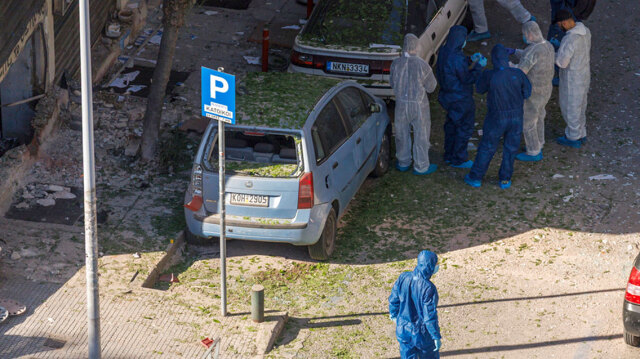The path of a 38-year-old woman from Georgia, who was killed when the bomb she intended to deploy exploded in her hands on Saturday morning, has been quickly traced by the Organized Crime Unit in Northern Greece. Investigators canvassed the area, locating her rented apartment on Olympiou Diamanti Street, which had been used as a bomb-making facility. Now, authorities are working to decipher various perplexing actions that complicate theories about her intended target. The attack, which resulted in her death, also caused significant damage in a central Thessaloniki neighborhood.
Timeline Leading Up to the Explosion
Reports indicate that in the moments leading up to the explosion, the woman was spotted walking along Agiou Dimitriou Street after coming from Iasonidou Street. She was seen carrying a backpack containing the bomb, passing two operational ATMs. After descending some stairs and turning onto Platonos Street, she left the bag on the sidewalk and walked away in the opposite direction—back up the stairs toward Iasonidou Street.
Ten minutes later, she returned unnoticed and walked directly back to the backpack. As she approached it, the device detonated, fatally injuring her. She later succumbed to her injuries at Ippokrateio Hospital. Some reports suggest she was briefly seen earlier before disappearing from sight again.
Unanswered Questions and Hypotheses
Her actions have raised numerous unanswered questions. Authorities believe that identifying and apprehending any accomplices may provide insights into her intended target. The prevailing theory among police is that the ATMs were the target, with the intention of triggering an explosion to steal cash. This possibility aligns with her criminal background and connections to a known bank robber with anarchist tendencies, who previously faced charges related to a parcel bomb plot aimed at a senior judge in Thessaloniki last December. That individual, currently imprisoned, allegedly provided guidance on constructing and sending the parcel bomb.
However, CCTV footage complicates this theory. It shows her walking past the ATMs without paying attention to them and leaving the backpack at a corner that would not affect the ATMs in the event of an explosion.
Alternative Theory: A Timing Miscalculation
Another, more speculative theory suggests that she may have placed the bag down temporarily, intending to position it at the target as the slow-burning fuse neared its end. Her return ten minutes later might have been to adjust its placement—potentially aiming for the ATMs—before a tragic accident caused the device to explode in her hands.
Another Potential Target and Comparisons
Another hypothesis posits that the actual target could have been the bank itself rather than the ATMs. This would indicate an intent to inflict property damage and convey an ideological message, echoing previous incendiary attacks against banks. Investigators speculate she may have returned to check on a device that failed to detonate as planned, possibly acting under orders from someone else.
In both scenarios, it is notable that only the bomber was killed—an outcome that could have been significantly worse. No prior warning was issued, as is often seen in ideological attacks, which raises concerns about the potential for collateral damage among innocent bystanders. This suggests a nihilistic inclination among the bombers, showing indifference toward potential casualties.
Connection to the Parcel Bomb Incident
This incident bears similarities to the parcel bomb case involving a judge in the Thessaloniki Court of Appeals. The primary suspect in that case is a 37-year-old inmate who had threatened the judge over legal matters and left clear signs of involvement, including threats made from prison and DNA evidence on the bomb’s tape. Likewise, the woman involved in Saturday’s bombing made no effort to disguise her identity; CCTV footage captured her clearly as she left her apartment with the bomb-filled backpack in broad daylight. The person who rented the apartment was quickly identified, and investigators are now examining DNA and fingerprints discovered at the scene, as well as on the explosive materials and bomb-making tools found there.
Ask me anything
Explore related questions

















